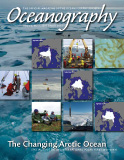Article Abstract
The retreat and thinning of Arctic sea ice associated with climate warming is resulting in ever-changing ecological processes and patterns. One example is our discovery of myriad new “marine aquaria” formed by melt holes in the perennial sea ice. In previous years, these features were closed, freshwater melt ponds on the surface of sea ice. Decreased ice thickness now allows these ponds to melt through to the underlying ocean, thus creating a new marine habitat and concentrating a food source for the ecosystem through accumulation of algae attached to refreezing ice in late summer. This article describes the formation of these late-season algal masses and comments on their overall contribution to Arctic ecosystems and the consequences of a continued decline in sea ice.

